Wildflower identification guide
All wildflower areas are havens for invertebrates who in turn provide food for other wildlife. Establishing a wildflower area, either a 100% UK Native Meadow or a more colourful Urban Meadow containing some non-native species, is of ecological value. The climate smart benefits and visual appeal of wildflowers have driven their rise in popularity in amenity settings.

In this wildflower identification guide, our specialists have identified common species and outlined their distinctive traits and preferred habitats. Whether you want to restore a natural habitat or protect the well-being of pollinators, understanding these characteristics will help you select the ideal wildflower mixture and be climate smart.
Overview: Wildflower varieties
- Birdsfoot Trefoil (Lotus corniculatus)
- California Poppy (Eschscholzia californica)
- Common Vetch (Vicia sativa)
- Corn Chamomile (Anthemis arvensis)
- Corn Marigold (Chrysanthemum segetum)
- Corncockle (Agrostemma githago)
- Cornflower (Centaurea cyanus)
- Cosmos (Cosmos)
- Dark Mullein (Verbascum nigrum)
- Harebell (Campanula rotundifolia)
- Kidney Vetch (Anthyllis vulneraria)
- Large-flowered Evening Primrose (Oenothera glazioviana)
- Musk Mallow (Malva moschata)
- Oxeye Daisy (Leucanthemum vulgare)
- Poppy (Papaver rhoeas)
- Red Campion (Silene dioica)
- Ribwort Plantain (Plantago lanceolata)
- Rough Hawksbit (Leontodon autumnalis)
- Selfheal (Prunella vulgaris)
- White Campion (Silene alba)
- Yarrow (Achillea millefolium)
- Yellow Rattle (Rhinanthus minor)
Birdsfoot Trefoil (Lotus corniculatus)
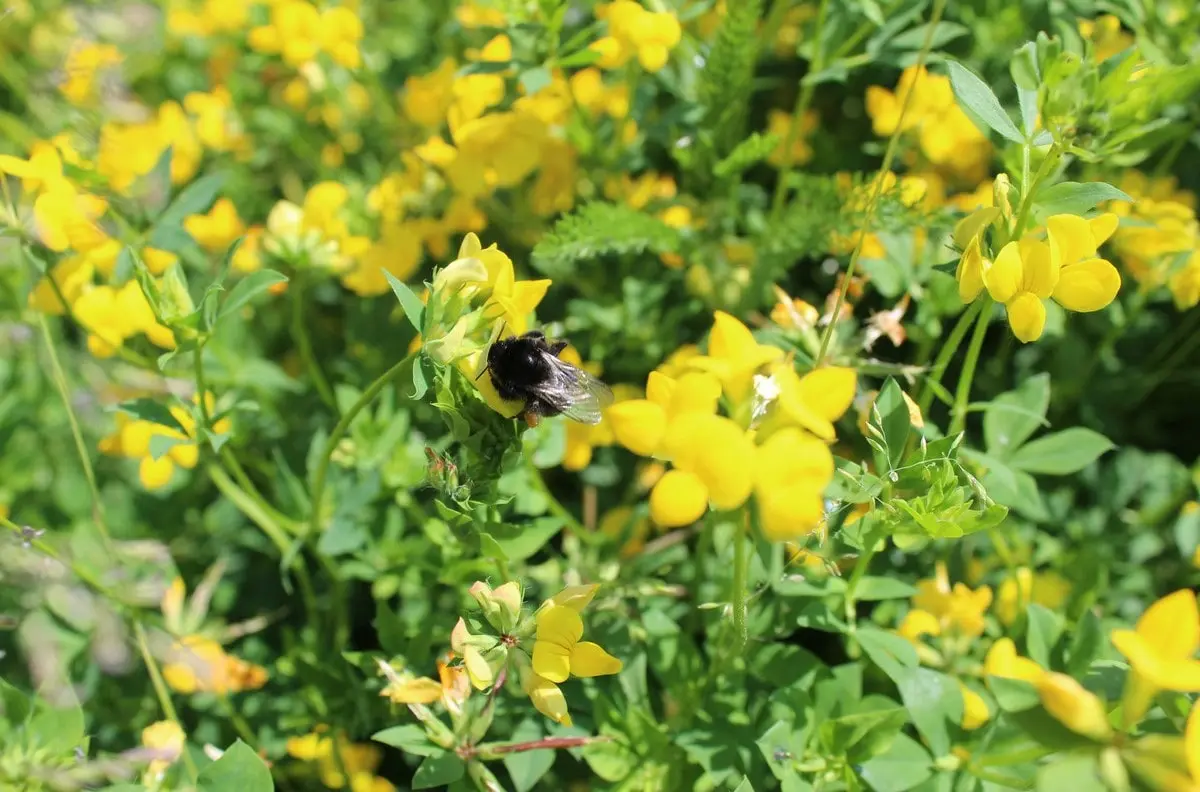
Flowering period: June-September
Birdsfoot Trefoil is a perennial, herbaceous plant and a pea family member. This wildflower is found in most areas, particularly on roadsides and in difficult soil conditions.
Birdsfoot Trefoil is low growing with eye-catching bright yellow flowers often streaked with red that change to orange as the plant matures. Caterpillars feed on the leaves, while the flowers provide one of the best wild nectar sources for bees.
California Poppy (Eschscholzia californica)
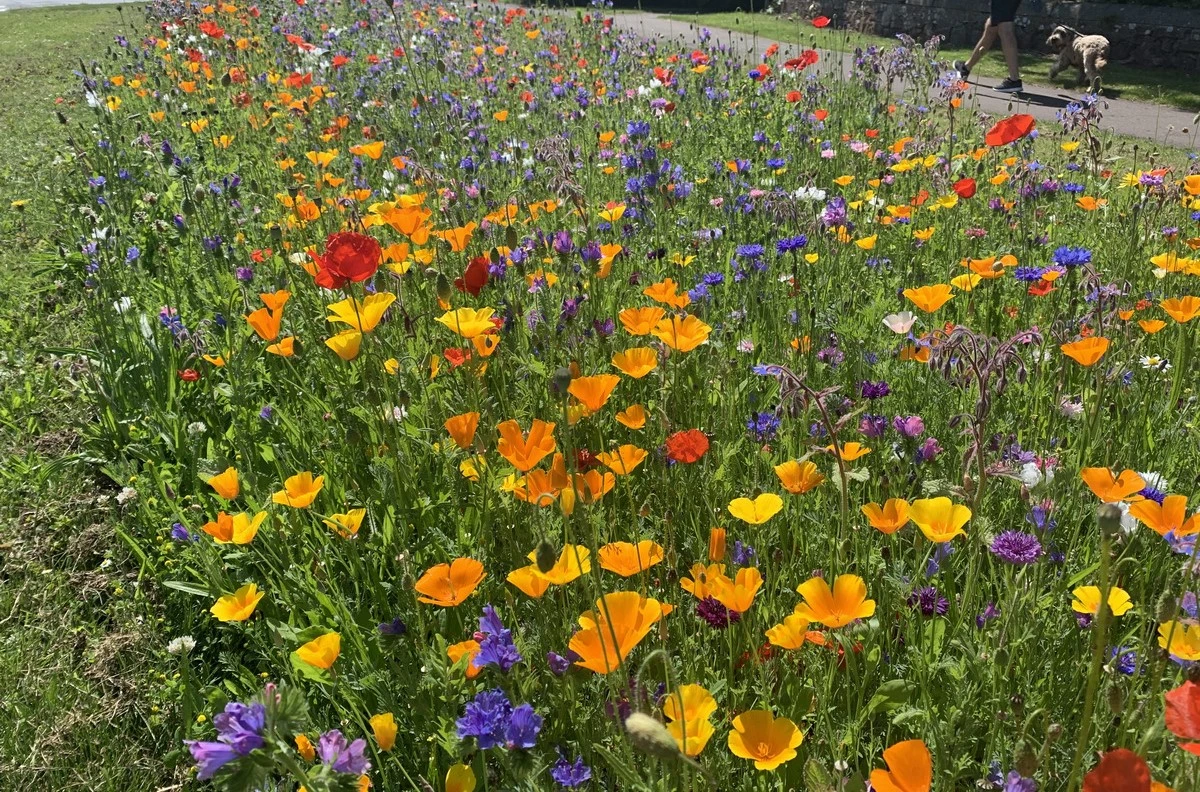
Flowering period: April-September
California Poppies are an annual plant. As the name suggests, they are not native to the UK. Their nectar-rich open flowers are highly beneficial to bees and pollinators.
California Poppy seeds are often sown in urban and suburban settings. Their extended flowering period and vivid colours ensure that Urban Meadow mixtures are valued by the public and thus retained for the benefit of pollinators.
Common Vetch (Vicia sativa)
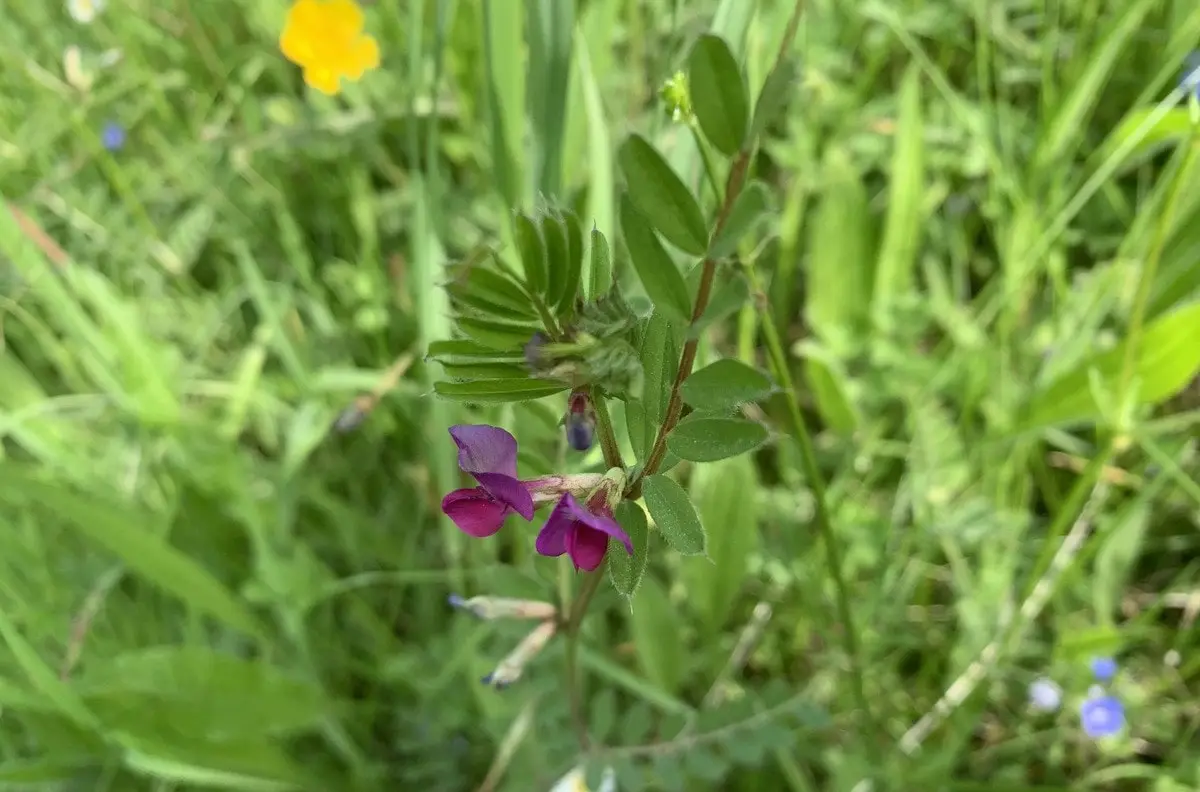
Flowering period: May-September
Common Vetch is a sprawling annual herb that grows up to 2 m and has linear or oblong lance-shaped leaves tipped with needles. The stems are hollow, hairless and typically grow in two to eight compounds.
The habitat of Common Vetch mainly includes grassland, wastelands and can also occur along the coast. The small 1.5-2.5 cm flowers are bright pink/purple flowers favoured by bumblebees.
Corn Chamomile (Anthemis arvensis)

Flowering period: May-August
Corn Chamomile has a native status in the UK but is thought to have been introduced in from Europe in medieval times. It can grow tall and dense (up to 80 cm but sometimes as low as 15 cm). The leaves have a scent of chamomile when crushed.
With Corn Chamomile, you'll see a daisy-like flower that brings colour to a wildflower mixture and is very attractive to many pollinators, including bees and butterflies. It grows in most soil types and aspects but prefers productive soils and plenty of sunlight.
Corn Marigold (Chrysanthemum segetum)

Flowering period: June-October
Corn Marigold is a branched plant with grey-green leaves reaching up to 90 cm in height. This UK native annual wildflower presents well in all mixtures thanks to its upright growth and large yellow daisy-like flowers, which offer an attractive pollen source for bees and pollinators.
Corn Marigold provides a beautiful display when planted with other native annual species such as Poppy, Corncockle and Cornflower.
Corncockle (Agrostemma githago)
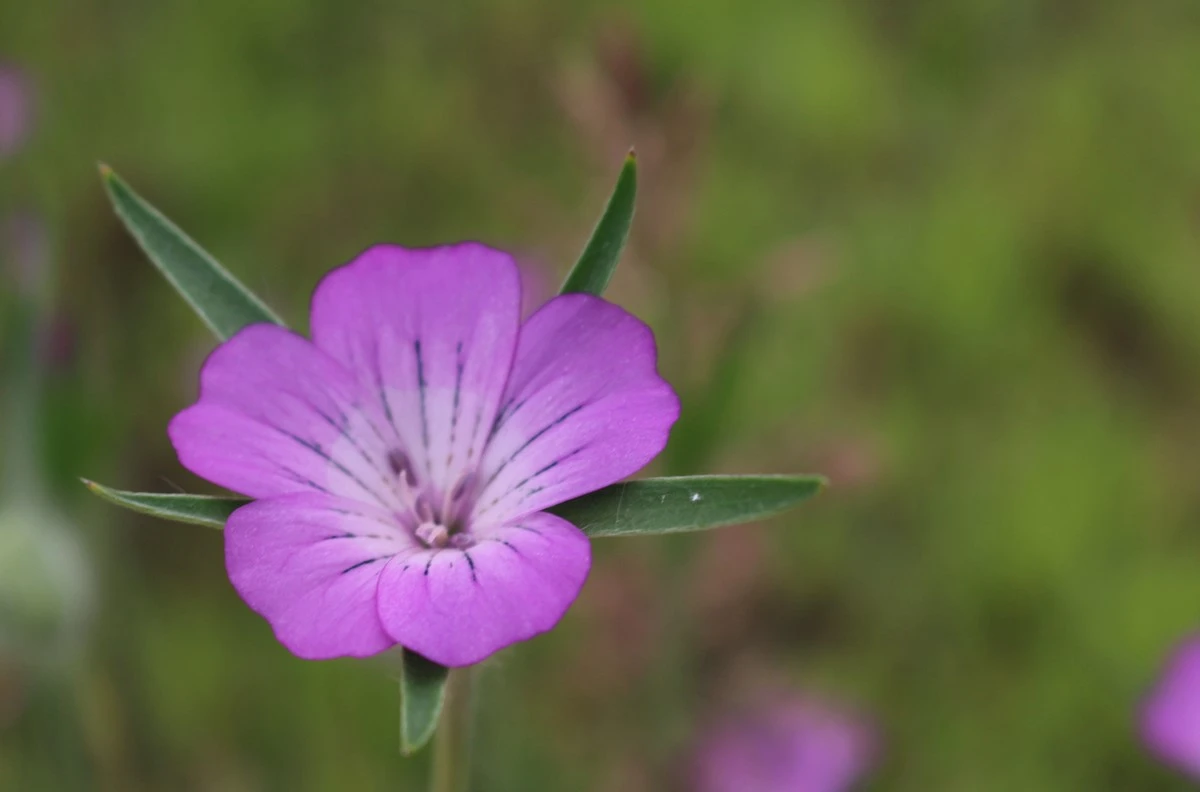
Flowering period: May-September
Corncockle is an annual wildflower that grows erect with long steam up to 100 cm, and the scentless flowers are up to 5 cm in diameter. The five petals are slender and pink in colour with discontinuous black lines with five sepals that exceed the petals.
The Corncockle plant is covered in hairs with pale green, lance-shaped leaves. Corncockle is easy to grow and can withstand most environments. A favourite in 'showy mixtures' as it is a vital source of nectar and pollen.
Cornflower (Centaurea cyanus)

Flowering period: June-September
The native annual Cornflower is part of the Asteraceae family and has a long flowering period. Preferring lean conditions, they are low maintenance and great for bees, butterflies and pollinators.
Many birds enjoy cornflower seed, and, if any remain behind, they will self-seed.
Cosmos (Cosmos)
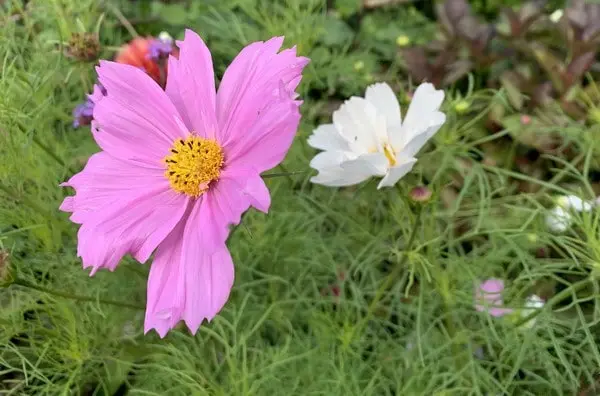 |
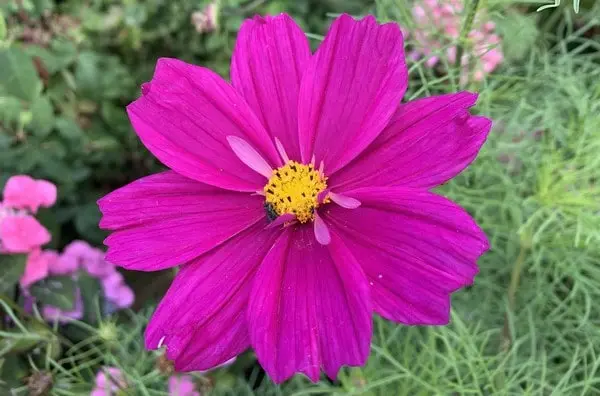 |
Flowering period: June-October
Cosmos are non-native annuals with colourful, daisy-like flowers on long slender stems. The flowers are 3-5 inches and can be pink, orange, red and yellow, white and maroon.
The Cosmos flower grows from summer to autumn, attracting birds, bees and butterflies. Similar to California Poppy and Coreopsis, an inclusion of Cosmos in an urban meadow mixture serves to extend the flowering period of a mixture to the benefit of pollinators and the enjoyment of the public.
Dark Mullein (Verbascum nigrum)
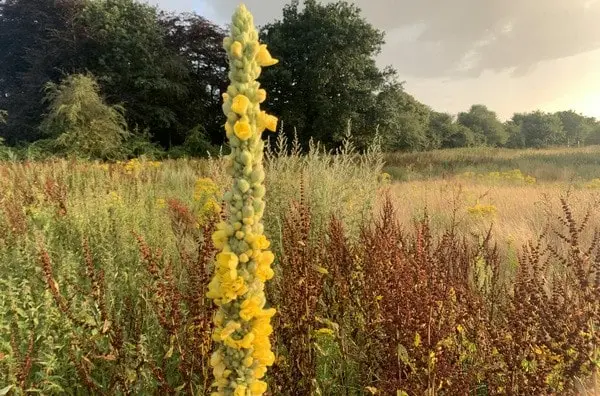 |
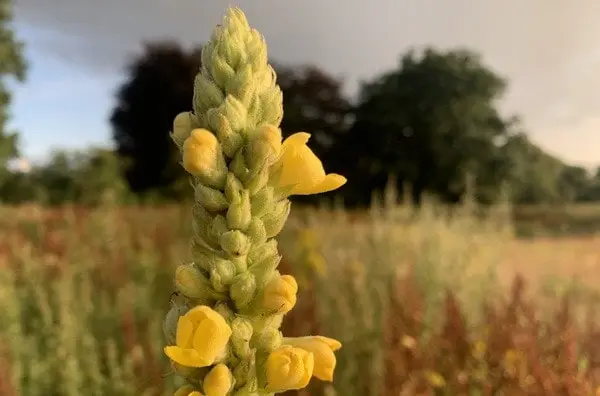 |
Flowering period: June-August
Dark Mullein (Verbascum nigrum) is a biennial upright plant that blooms from June to August, reaching up to 2 m. The stem is adorned with soft grey/green leaves with a flowering tip of yellow flowers.
This wildflower interests a diverse range of wildlife and is an excellent pollen and nectar source for insects. The tiny seeds produced are a food source for seed-eating animals, including birds such as the goldfinch. Dark Mullein's stems provide hibernation sites for over-wintering invertebrates.
Harebell (Campanula rotundifolia)

Flowering period: July-September
Harebell is a very attractive native perennial, often found in grassy meadows on dry sandy soils, sandy heathland and mature dunes. The colour can vary from intense blue to a purple-blue colour depending upon ecotype with some being white or pink.
The plants are usually 15-40 cm tall but can also grow up to 70 cm in rare situations. The stems are long and slender with larger leaves at the bottom than at the top, The flowers nod and hang down (like bells) from the top of the stem.
Harebell flowers are nectar-rich and particularly beneficial for bees. It is thought that Harebells get their name from a past belief that witches would drink the nectar from the flowers to turn themselves into hares.
Kidney Vetch (Anthyllis vulneraria)

Flowering period: June-September
Kidney Vetch is a perennial wildflower with round clusters of mainly small yellow flowers. It can be found in coastal cliffs, grasslands and heathlands across the UK.
The flower has a hairy calyx, giving the cluster a woolly appearance. Kidney Vetch leaves are divided into narrow leaflets that are silky and white underneath.
Growing up to 30 cm, this spreading plant can cover bare ground in the right conditions.
Large-flowered Evening Primrose (Oenothera glazioviana)

Flowering period: June-September
Large-flowered Evening Primrose is not a native biennial but has been widely naturalised since being introduced into the UK in the 18th century.
The large yellow flowers comprise four petals which only open in the evening when the subtle orange blossom scent attracts bees, moths and butterflies. The Large-flowered Evening Primrose plant completes its life cycle in two years, producing flowers in the second year and can grow up to 1.8 m tall.
There are numerous types of Evening Primrose in the UK but the two most common are naturalised species known as Common Evening Primrose Oenothera biennis and Fragrant Evening Primrose. Both wildflowers originate from South America with Common Evening Primrose having been thought to have arrived first in the 16th century.
Musk Mallow (Malva moschata)
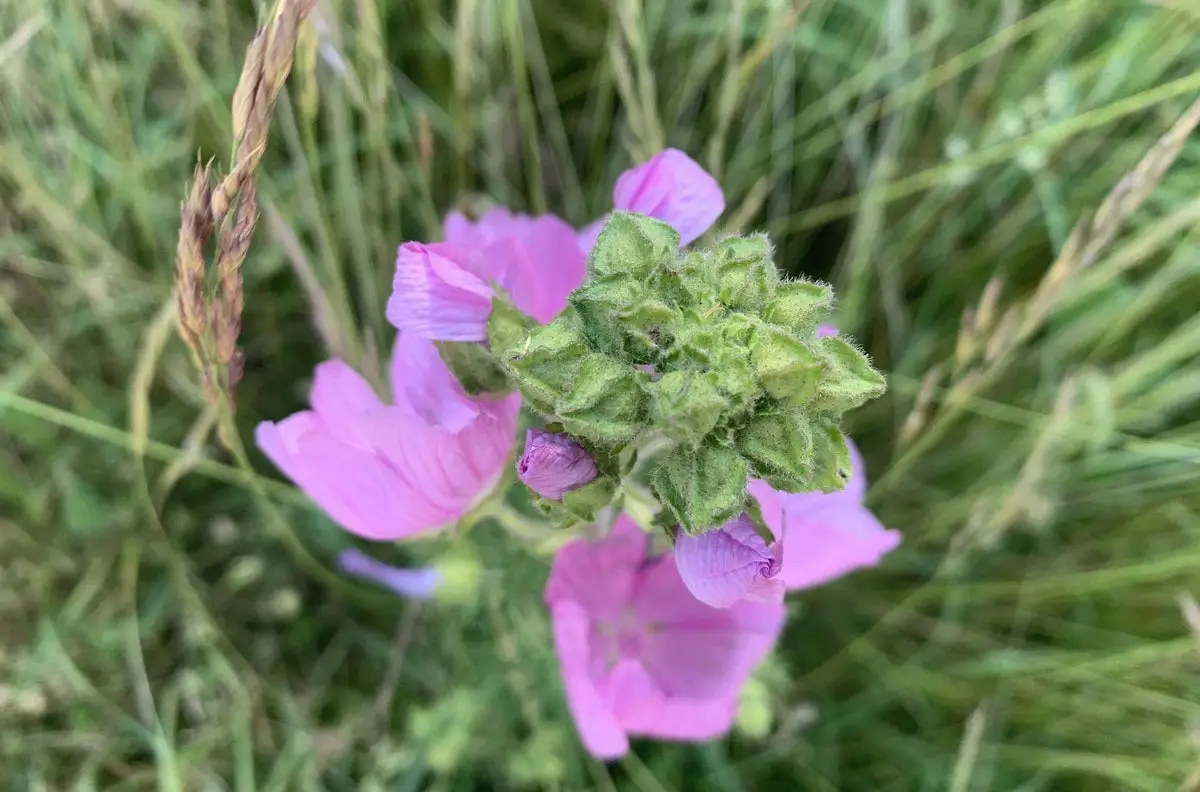
Flowering period: July-August
Musk Mallow is an upright perennial wildflower native to Southern England and closely related to the Common Mallow.
This wildflower is found all over the British Isles and is common in hedgerows, field margins and roadside verges. Musk Mallow has pink summer flowers and can grow to 1 m, attracting bees, insects, butterflies and other pollinators.
Oxeye Daisy (Leucanthemum vulgare)
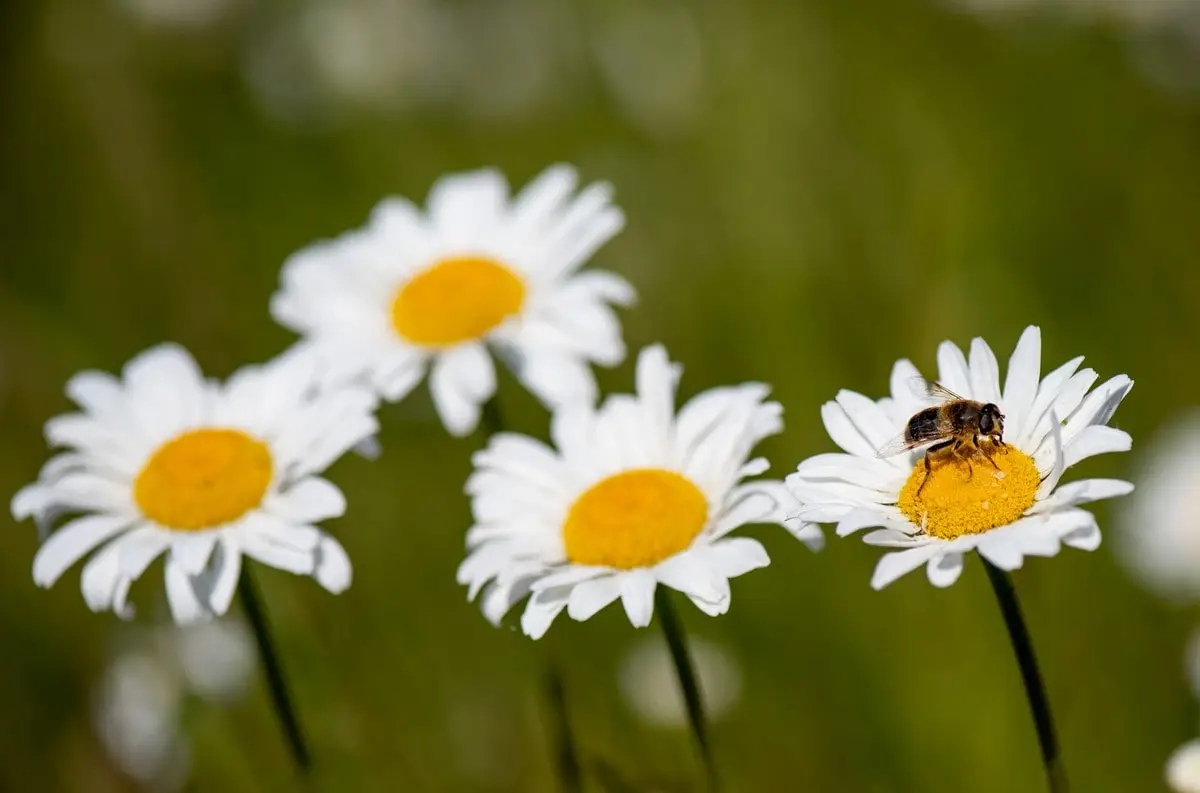
Flowering period: May-September
Oxeye Daisy is a perennial wildflower often found in grassland and wildflower meadows. It can colonise open ground if left to establish.
Bearing a medium to tall un-branched stem topped by a solitary daisy flower, it can grow up to 60 cm high.
Poppy (Papaver rhoeas)

Flowering period: June-August
Poppies are arguably the most instantly recognisable of wildflowers and are found almost everywhere, from newly cultivated ground to waste ground.
Poppy seeds are a high-protein food source for birds such as sparrows, dunnocks and small mammals such as field mice.
Red Campion (Silene dioica)
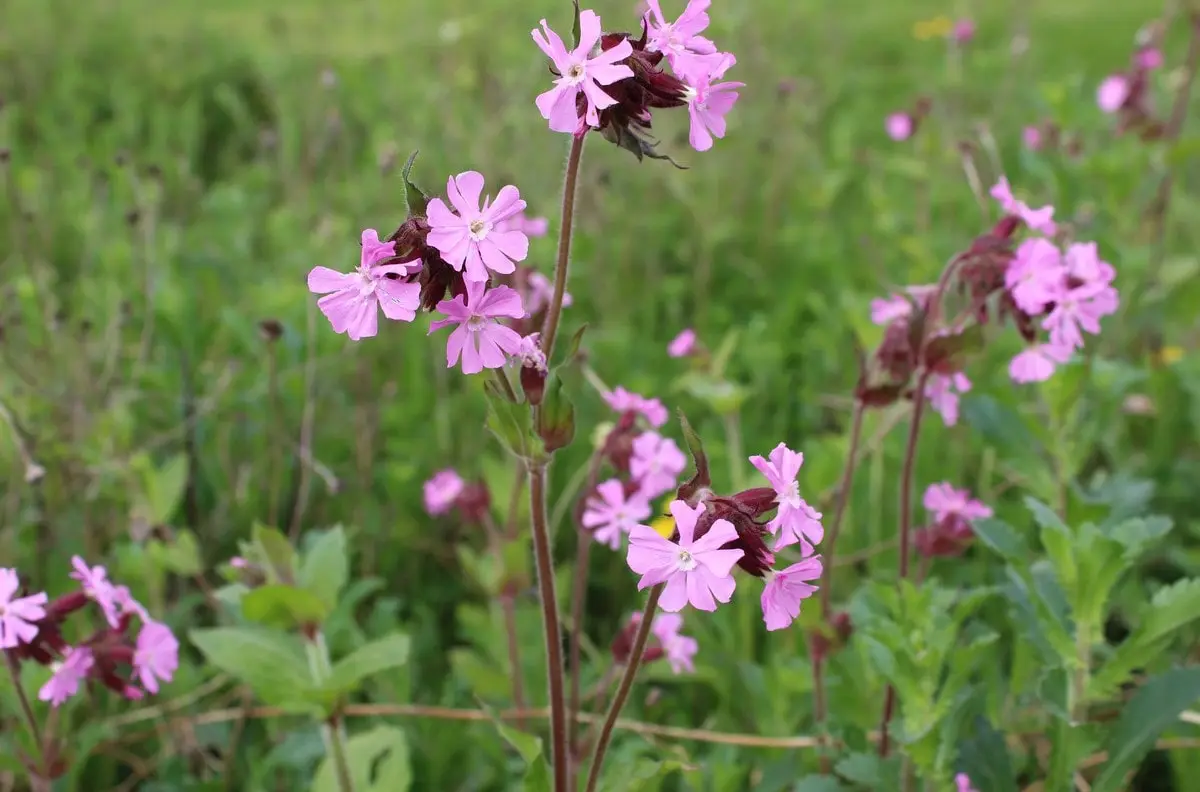
Flowering period: April-September
Red Campion is a perennial plant that grows from a stem with branches from 30-90 cm in height. The wildflower blooms into small, dark pink to red flowers, which are 1.8 to 2.5 cm in diameter and the five petals are deeply notched and narrow at the base.
Red Campion leaves are deep green, 3-8 cm long and grow in opposite and intersecting angles. The stems and leaves are hairy and slightly sticky.
An early show of colour is always welcomed in a mix. An ancient species that favours shady woodland and hedgerows and is frequently visited by moths, bees, butterflies and hoverflies.
Ribwort Plantain (Plantago lanceolata)

Flowering period: April-October
Ribwort Plantain is a perennial herb that appears in grassland and disturbed land. Notable by its large, lance-shaped leaves with strong parallel veins.
The Ribwort Plantain flowers are leafless and erect with hairy stems up to 40 cm long. The inflorescence is oval with small white flowers and can produce hundreds of seeds.
A very dependable plant that can grow anywhere and is a desirable food source for birds, rabbits and some insects.
Rough Hawksbit (Leontodon autumnalis)
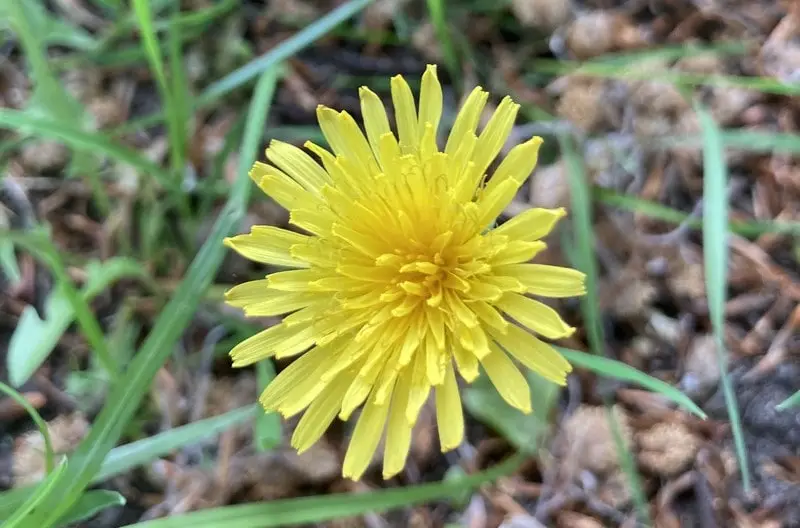
Flowering period: June-October
Rough Hawksbit is very similar to the Dandelion and is often found in hedgerows and road verges. The flowers have a pleasant fragrance and can attract bees and butterflies.
In addition to flowering for a long time, this perennial wildflower can self-seed and multiply after blooming. These seeds are sought after by many bird species.
Selfheal (Prunella vulgaris)

Flowering period: June-October
Selfheal is a creeping perennial that reaches a height of 30 cm and has dense, upright spikes with 2-5 cm long clusters of tubular flowers ranging from purple to pink or white.
This wildflower attracts bees, butterflies and other beneficial insects. Selfheal is borne on self-rooting square stems, with rooting stems bearing oblong leaves and short erect spikes.
White Campion (Silene alba)
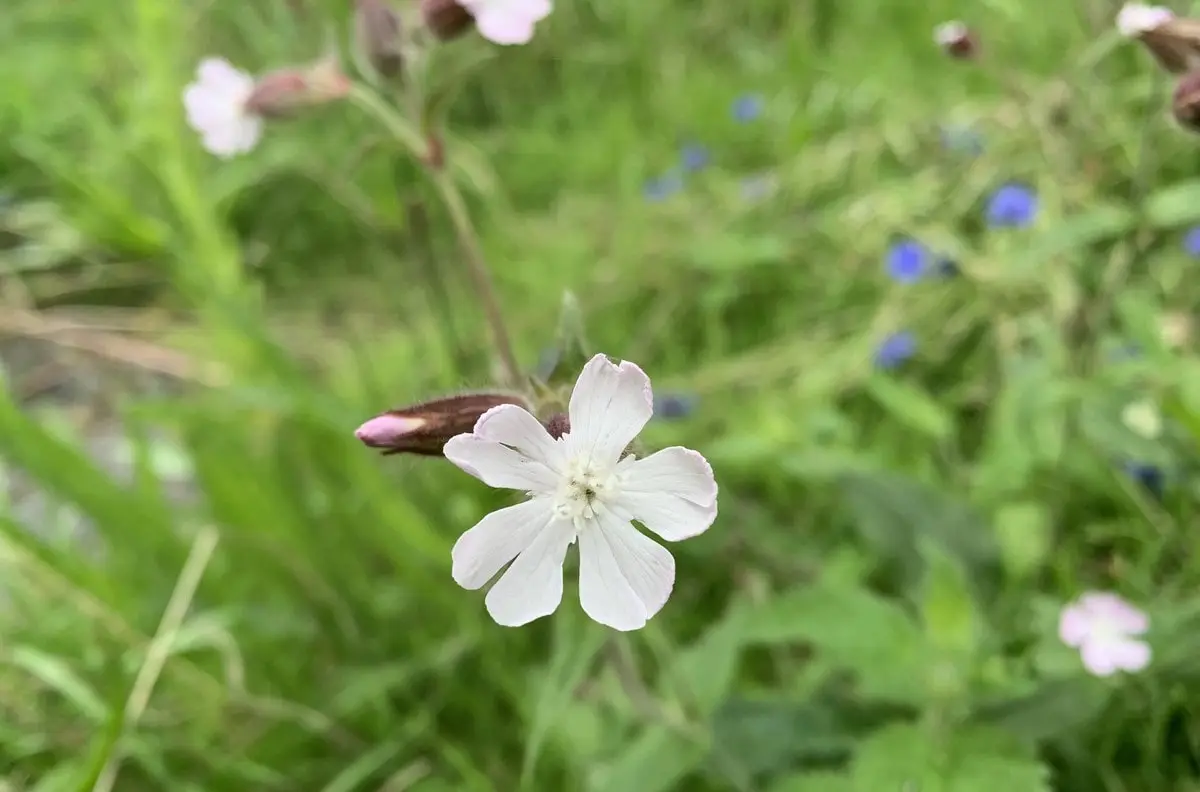
Flowering period: May-September
White Campion is a common perennial wildflower species found in many areas, including field edges, road verges and waste ground, but particularly in semi-shaded areas.
The wildflower species is easily recognisable and often found alongside Red Campion. A good source of pollen for many species of bees, butterflies and moths.
Yarrow (Achillea millefolium)

Flowering period: June-August
Yarrow is a perennial wildflower often considered a weed. But it’s actually an important plant that’s tolerant to mowing and thrives in lawn areas, road verges and many public open spaces.
The cluster of flower heads attracts many insects, including beetles, who feed on aphids that are attracted to Yarrow flowers.
Yellow Rattle (Rhinanthus minor)
 Flowering period: May-August
Flowering period: May-August
Yellow Rattle is an annual and partly parasitic wildflower that can grow from 12 to 50 cm in height and is typically found in open fields and grasslands.
It’s often known as the 'meadow maker' due to its ability to share the root systems of vigorous grasses, thus weakening them so other plants in the meadow can thrive.
Wildflower expert advice
Please contact our Germinal Amenity experts if you have any questions about the wildflowers listed in this guide. You can find many of these varieties in our range of wildflower seed mixtures here.


